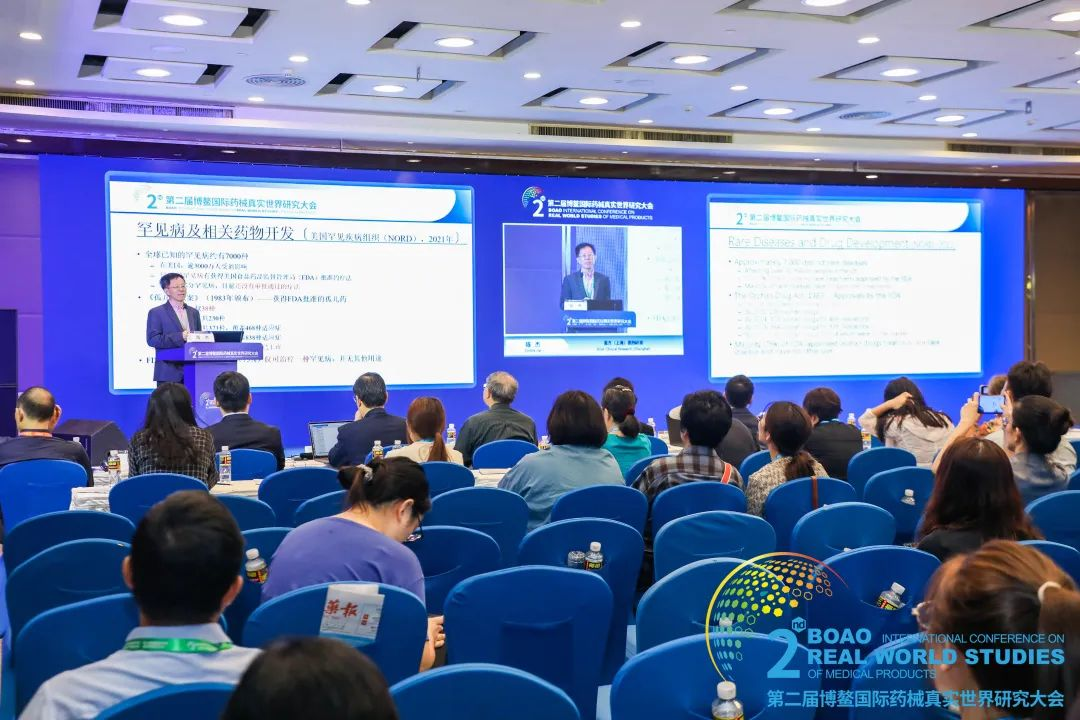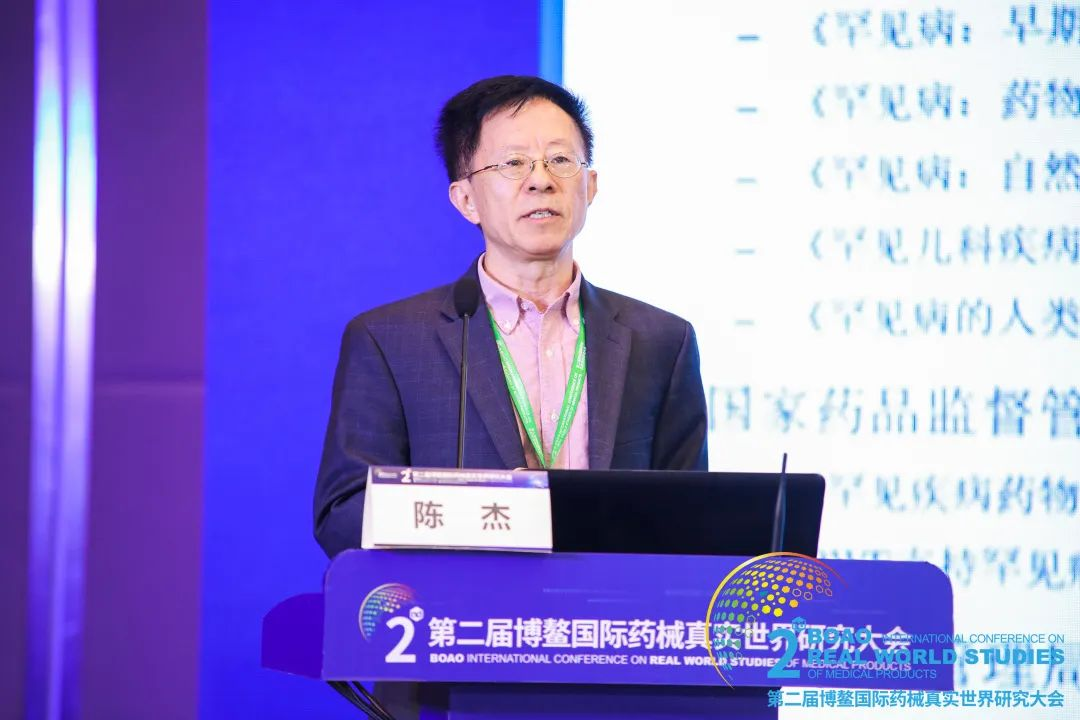






Recently, the 2nd Boao International Conference on Real World Studies of Medical Products commenced at the Boao Forum for Asia (BFA) International Conference Center in Hainan. Principal leaders from the People's Government of Hainan Province and the National Medical Products Administration, experts from relevant departments, as well as experts and scholars from foreign regulatory agencies of Europe, America, Japan, and other countries, domestic and foreign renowned institutions of higher learning, research institutions, medical institutions and pharmaceutical companies, gathered to share advancements in regulatory science and results of industrial practice.

Dr. Jie Chen, Chief Scientific Officer of Elixir Clinical Research, was invited to attend the conference and delivered a keynote speech titled "RWS Facilitating Rare Disease Drug Development: Challenges and Opportunities".
Difficulty
Challenges in Rare Disease Drug Development
Rare diseases, characterized by low incidence rates, complex disease courses, and difficulties in diagnosis and treatment, are a significant global health concern. Definitions of rare diseases vary worldwide, and there's a lack of unified international standard in their classification. In the United States, diseases affecting fewer than 200,000 individuals are categorized as rare diseases. The European Union defines rare diseases as diseases with a prevalence of less than 1 in 2,000 individuals, while Japan considers diseases affecting fewer than 50,000 individuals as rare. In China, the definition of rare diseases varies with different age groups, which, for instance, categorizes diseases with an incidence rate of less than 1 in 500,000 in adults as rare.
Patients with rare diseases form a small group and often lack effective treatment options, making the conduct of randomized controlled clinical trials (RCTs) generally difficult. The return on investment for R&D in this area is relatively low; 80% of rare diseases are genetic, and about half of the patients are children, necessitating additional considerations. Limited data on epidemiology and natural history of rare diseases, insufficient medical information, lack of recognized methods for efficacy evaluation and research endpoints further complicate matters. Rare diseases often have multiple subtypes, each with varying symptoms, signs, incidence rates, and progression patterns, contributing to high heterogeneity among patients. These factors collectively exacerbate the challenges in developing innovative drugs for rare diseases.
New
Real-World Studies Facilitating Rare Disease Drug Development
For rare diseases, traditional randomized controlled trials are difficult to implement. Real-world studies, as a method of clinical research, generate evidence closer to clinical practice and can compensate for the limitations of RCTs. They have become a new focus of global regulatory agencies, the pharmaceutical industry, and the academic community in drug development and regulation.
To further guide and standardize the use of real-world evidence in supporting rare disease drug development and review, the National Medical Products Administration (NMPA) of China, in May 2019, published the "Key Considerations in Using Real-World Evidence to Support Drug Development (Draft for Public Review)", which highlights that, besides the rarity of cases and recruitment difficulties, the biggest challenge in clinical trials of drugs for rare diseases is the selection of controls, as there is often no or very limited alternative treatment for rare diseases. Therefore, real-world data and corresponding real-world evidence from natural disease cohorts can serve as external controls.
External controls are primarily used in non-randomized single-arm trials and can be either historical controls or parallel external controls. Historical controls utilize previously obtained real-world data as a comparison, while parallel external controls use real-world data (such as disease registry data) collected concurrently with the conduct of the single-arm trial as a comparison. When adopting external controls, it is important to consider the impact of the target population's heterogeneity and comparability on real-world evidence.

Dr. Jie Chen believes that utilizing real-world data to demonstrate the natural characteristics of a disease, and comparing it with the experimental group, can reduce time and cost investments.
Key
Crucial Aspects in Rare Disease Drug Development
The statistical design, data collection and analysis, as well as the interpretation of results in clinical studies of drugs for rare diseases, should follow ICH E9 and E9 (R1), while taking fully into account the impact of estimation targets and concomitant events. Given the characteristics of rare diseases, Dr. Jie Chen introduced the key points in the development process of drugs for rare diseases:
In terms of trial design, due to the lack of recognized evaluation methods for rare diseases, primary efficacy endpoints should consider a broader range of disease stages or phenotype endpoints in terms of their effectiveness, sensitivity, reliability, and interpretability.
When utilizing real-world evidence, it's essential to fully assess the scientific nature of the study methods, the quality and relevance of the data, and the reliability of the study results. The focus should be on analyzing potential selection bias, information bias, and confounding bias in the study, and explaining the related control measures for such biases in the study design, implementation, and statistical analysis processes respectively.
For study results, their limitations should be explored, and full sensitivity analyses should be conducted to test the robustness of the study conclusions.
Roundtable Discussion
Dr. Jie Chen, along with several experts and scholars, engaged in a deeper exploration of real-world studies in a lively atmosphere during a roundtable discussion. The core and premise of real-world studies are high-quality real-world data. In response to audience queries about real-world data, Dr. Jie Chen shared a case of cancer trial, pointing out the problems of confounding and bias that are common in real-world data. He noted that there are many statistical methods derived from real-world data that can better evaluate the presence, magnitude, and direction of bias.

Real-world studies hold a unique significance in the development of innovative drugs for rare diseases. They can form a continuous and complete chain of medical evidence alongside RCTs, supporting multiple aspects of drug development, review, marketing approval, and regulatory decision-making. Elixir Clinical Research (ECR Global) has extensive project experience in the field of real-world studies. The team members, mostly from well-known CRO companies and major pharmaceutical and medical device enterprises, possess interdisciplinary academic backgrounds. Leveraging the company's digital innovation capabilities, ECR Global can assist projects in the field of rare diseases to achieve higher clinical value, meet urgent clinical needs, and facilitate the launching of these products in China.
For more details, please contact
info@ecr-global.com

